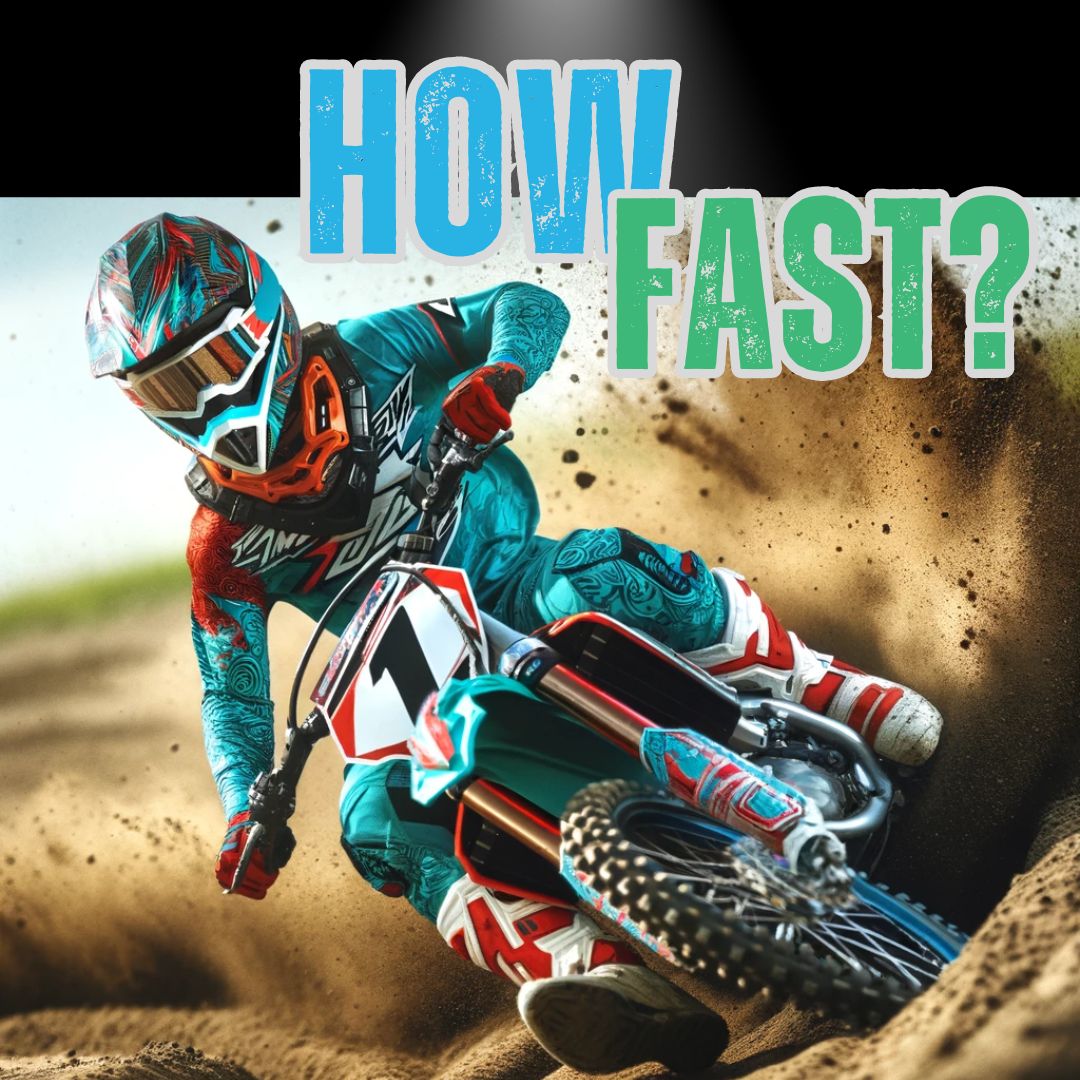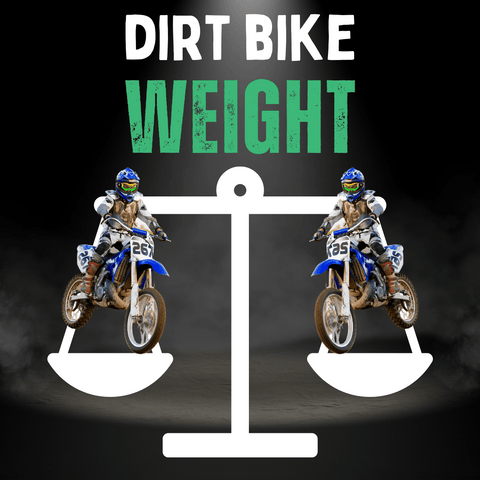
Published: 16 November 2023
Updated: 24 March 2025
Dirt bikes bring the thrill! Curious about their top speeds?
This guide explores the world of dirt bikes, breaking down speed limits and what drives them.
We’ll cover types from beginner-friendly to racing beasts.
Average Dirt Bike Speeds
50cc Dirt Bikes
50cc bikes hit 25-40 mph—perfect for kids starting out.
They’re easy to handle and safe for young riders.
65cc Dirt Bikes
65cc models reach up to 62 mph, ideal for novices.
Lightweight and safe, they’re a step up for growing riders.
80cc Dirt Bikes
80cc bikes average 45-55 mph, with some pushing past 55 mph.
They bring more thrill for riders moving beyond basics.
100cc Dirt Bikes
100cc bikes range from 50-80 mph based on tuning.
They tackle sand, gravel, and mud with exciting speed.
110cc Dirt Bikes
110cc dirt bikes hit 50-55 mph, balancing speed and control.
125cc Dirt Bikes
125cc dirt bikes reach 55-60 mph or more downhill with a heavy rider.
They suit experienced riders seeking power.
150cc Dirt Bikes
150cc bikes average 50-60 mph, with skill pushing them further.
250cc Dirt Bikes
250cc bikes hit 70-80 mph, varying by engine type.
450cc Dirt Bikes
450cc bikes top out at 90 mph, boosted by mods and terrain.
| Engine Size (cc) | Speed Range (mph) | Rider Level |
|---|---|---|
| 50cc | 25-40 | Beginner |
| 65cc | Up to 62 | Novice |
| 80cc | 45-55 | Intermediate |
| 100cc | 50-80 | Intermediate |
| 110cc | 50-55 | Intermediate |
| 125cc | 55-60 | Experienced |
| 150cc | 50-60 | Experienced |
| 250cc | 70-80 | Advanced |
| 450cc | Up to 90 | Expert |
Estimate Your Bike’s Speed
Want to know your dirt bike’s potential? Try our calculator below.
Enter the engine size (cc) for a rough top speed estimate.
Dirt Bike Speed Calculator
Note: Estimates vary by terrain, rider, and mods.
Factors Influencing Speed
Engine Type & Size
Two-stroke engines often outpace four-strokes in speed, while a larger cc means more power.
Terrain
Flat tracks boost speed; mud or hills slow it down.
Rider Weight
Heavier riders may see less acceleration; lighter ones gain speed.
Maintenance
Regular care—oil changes, tire checks—keeps speed optimal.
Related: How Much Does a Dirt Bike Weigh?
Safety Tips
Wear a helmet, goggles, and armour. Master throttle and braking for control.
Top Brands & Speeds
Fastest Dirt Bike Brands 2025
| Model | Top Speed (mph) | Key Features |
|---|---|---|
| Honda CRF250R | 70-75 | Reliable, steady power |
| Yamaha YZ250F | 70-75 | High-revving, agile |
| KTM 250 SX-F | 78 | Raw speed leader |
Conclusion
Dirt bikes blend speed and skill. Know your bike, stay safe, and enjoy the ride!
FAQ’s
How fast is a 50cc dirt bike?
A 50cc dirt bike reaches 25-40 mph—great for beginners.
What’s the fastest dirt bike in 2025?
450cc bikes hit up to 90 mph, with KTM often leading in speed.
How does terrain affect dirt bike speed?
Flat tracks maximize speed; mud or sand slows it down.
Can maintenance boost dirt bike speed?
Yes! Tune-ups and tyre care keep speeds high.
Ready to Ride? 🚀
Loved our 2025 guide on dirt bike speeds?
Explore more at RiiRoo.com or chat live with us!






Share:
How To Get Your Child Started In Motocross in 2025?
What Is Better, A Motorcycle Or A Dirt Bike?